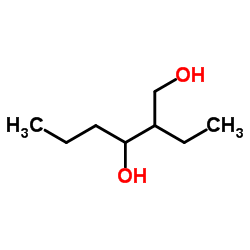Attraction of mosquitoes to diethyl methylbenzamide and ethyl hexanediol.
Z A Mehr, L C Rutledge, M D Buescher, R K Gupta, M M Zakaria
文献索引:J. Am. Mosq. Control Assoc. 6(3) , 469-76, (1990)
全文:HTML全文
摘要
Studies by prior workers have shown that insect repellents can act as attractants when present as low concentrations, deposits or residues. In the present study deet and ethyl hexanediol were tested in 2-fold serial doses from 1.9 X 10(-9) to 1.6 X 10(-2) mg/cm2 on the forearms of volunteers against colonized Anopheles albimanus, Aedes aegypti and Ae. taeniorhynchus. Both compounds were significantly repellent at the high end of the dose range, as expected. Neither was significantly attractant to An. albimanus in low doses. However, deet was significantly attractant to Ae. aegypti in the dose range 7.6 X 10(-9) to 1.2 X 10(-4) mg/cm2 and to Ae. taeniorhynchus in the dose ranges 1.9 X 10(-9) to 3.1 X 10(-8) mg/cm2 and 2.0 X 10(-6) to 2.5 X 10(-4) mg/cm2. Ethyl hexanediol was significantly attractant to Ae. taeniorhynchus in the dose range 1.9 X 10(-9) to 6.2 X 10(-5) mg/cm2. Based on these results and prior work of V.G. Dethier and C.N.E. Ruscoe, a model sequence of the effects of chemicals on insects with increasing dose was developed. It was concluded that the labels of commercial repellents should be amended to include instructions to wash off or reapply the repellent when it is no longer effective.
相关化合物
| 结构式 | 名称/CAS号 | 分子式 | 全部文献 |
|---|---|---|---|
 |
驱蚊醇
CAS:94-96-2 |
C8H18O2 |
|
Comparative sensitivity of four Anopheles (Diptera: Culicida...
1991-05-01 [J. Med. Entomol. 28(3) , 417-20, (1991)] |
|
The acute toxicity and primary irritancy of 2-ethyl-1,3-hexa...
1985-12-01 [Vet. Hum. Toxicol. 27(6) , 491-5, (1985)] |
|
Prevention of Lyme disease.
1992-05-01 [Am. J. Hosp. Pharm. 49(5) , 1164-73, (1992)] |
|
Intralaboratory and interlaboratory evaluation of the EpiDer...
2009-03-17 [Mutat. Res. 673(2) , 100-8, (2009)] |
|
Pharmacokinetics of 2-ethyl-1,3-hexanediol. III. In vitro sk...
1995-11-01 [Fundam. Appl. Toxicol. 28(1) , 1-8, (1995)] |